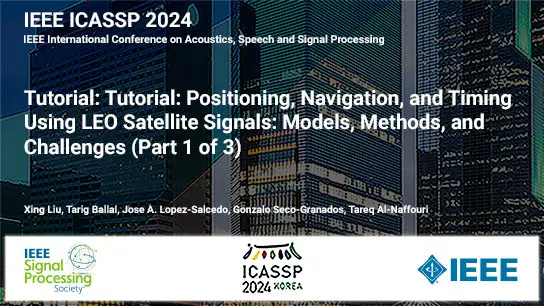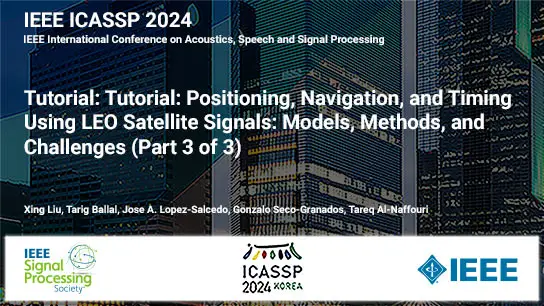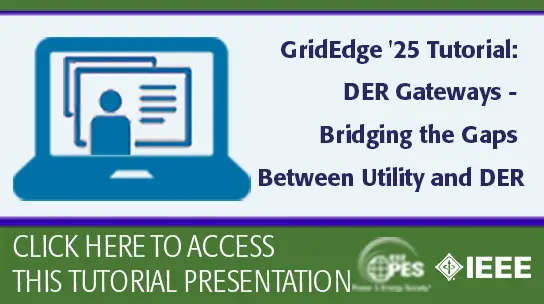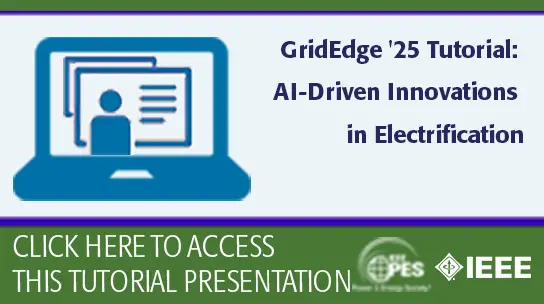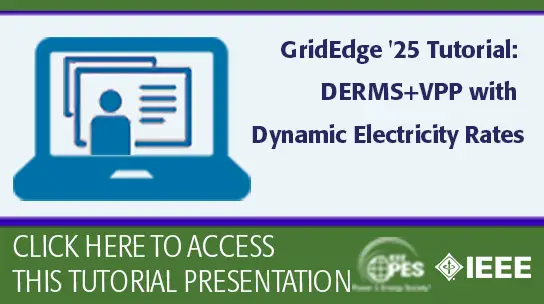Tutorial Bundle: Positioning, Navigation, and Timing Using LEO Satellite Signals: Models, Methods, and Challenges (Parts 1-3), ICASSP 2024
Xing Liu, Tarig Ballal, Jose A. Lopez-Salcedo, Gonzalo Seco-Granados, Tareq Al-Naffouri
-
Members: $10.00SPS
IEEE Members: $22.00
Non-members: $30.00
About this Bundle
Tutorial Bundle: Positioning, Navigation, and Timing Using LEO Satellite Signals: Models, Methods, and Challenges (Parts 1-3), ICASSP 2024
Background Material Introduction to PNT Introduction to satellite constellations (LEO, MEO, and GEO) Legacy PNT using GNSS. GNSS PNT shortcomings. LEO Constellation Basics A closer look into LEO constellations and their main characteristics, orbits, geometry, velocity, coverage, etc. We will focus more on the signaling aspects such as modulation schemes, coding techniques, channel characteristics, receiver design, etc. We will contrast LEO attributes with those of GNSS, highlighting potential strengths and weaknesses. PNT using LEO constellations In this section, we will cover the main techniques for PNT based on LEO satellite signals. We will distinguish between two main groups of methods: PNT based on SoP from LEO satellite designed for other (non-PNT) purposes. PNT based on dedicated LEO satellite signals. PNT based on 5G non-tersterial networks (NTNs). We will discuss the pros and cons of each of the two categories. For each category, we will discuss the following topics: The signal models. The main signal parameters (known as observations) that are useful for navigation. The methods that can be applied to acquire the signal parameters. We will conclude this section by presenting A general model for each observation type. The latter observation models will be used in the following section to develop specific techniques and algorithms for LEO-based PNT. PNT using LEO-based PNT Techniques Here we will provide detailed descriptions of algorithms that can be used, or that have been proposed, for LEO PNT. We will establish a connection with GNSS-based techniques. We will cover the following topics: Doppler-based techniques. Pseudorange-based techniques. Carrier-phase-based techniques. A variety of PNT filtering techniques. Simulations and demonstrations In this section of the tutorial, we will present results from extensive simulations to highlight various aspects of LEO PNT. We will make our simulation codes freely accessible in the public domain. Opportunities and Challenges The final part of the tutorial will highlight the most prominent research directions and challenges that might be of interest to the community. Summary Tutorial Summary highlighting the takeaway messages. References We will provide an extensive list of references.
01 Nov 2024
